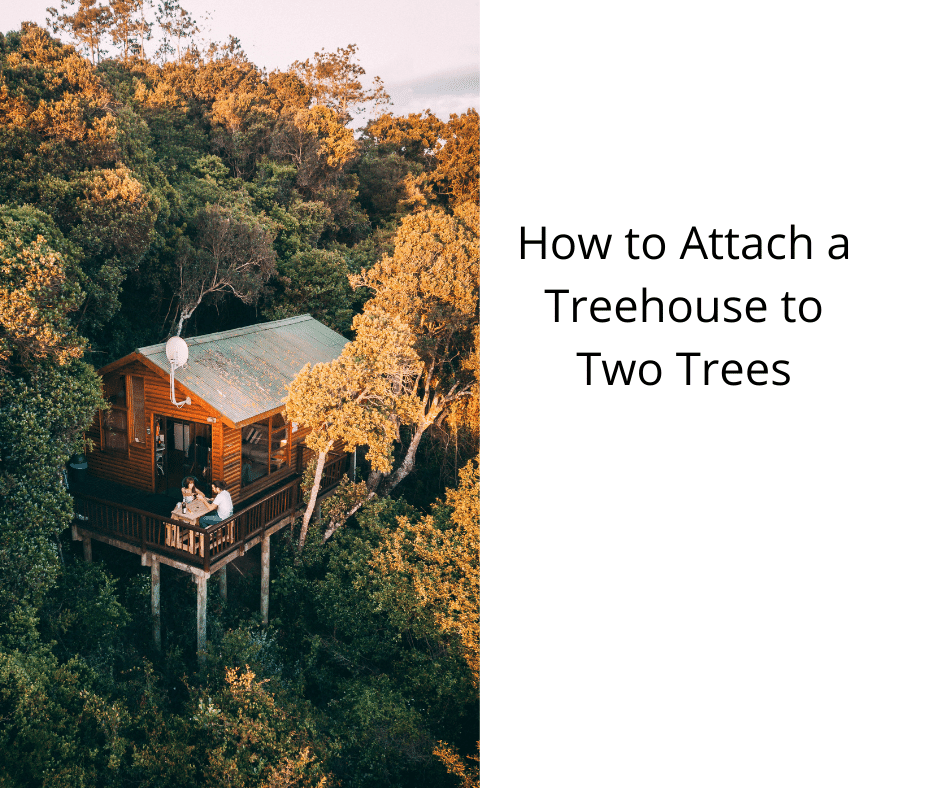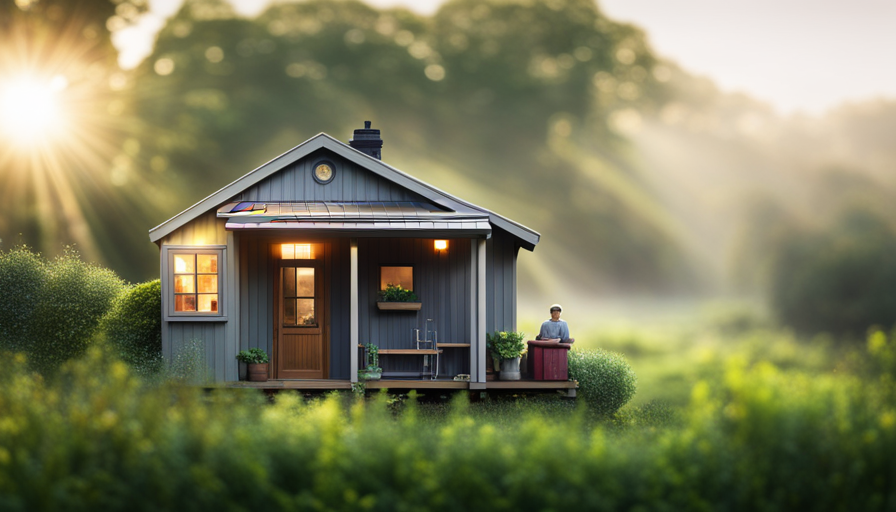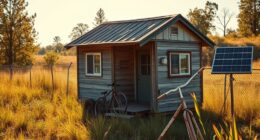Are you prepared to earn substantial income from a small investment? Launching a rental business for tiny houses is akin to discovering a treasure within the flourishing hospitality sector. This opportunity is a veritable goldmine awaiting exploration, and I am here to guide you through it.
Imagine being the captain of your own ship, navigating through uncharted waters of entrepreneurship, and reaping the rewards of your hard work. With a little research, planning, and creativity, you can tap into the growing demand for unique, eco-friendly accommodations and create a successful business that brings joy to travelers and fills your pockets.
But where do you start? How do you turn your dreams of owning a profitable tiny house rental business into reality? Don’t worry, I’ve got you covered.
In this article, I’ll guide you through the essential steps to launch your venture, from researching the market and designing your tiny houses to setting competitive pricing and establishing excellent customer service. So buckle up, because your journey to tiny house rental success starts now.
Key Takeaways
- Research the market, identify target audience, and analyze competitors.
- Determine location and size of tiny houses based on target audience’s needs and popular destinations.
- Develop a pricing strategy and marketing plan, utilizing online booking platforms and social media.
- Establish strong customer service and communication channels, actively engage with customers, and use feedback to improve offerings.
Research the Market and Identify Your Target Audience
Now that you’ve decided to start your own tiny house rental business, it’s time to dive into researching the market and identifying who your target audience will be.
Identifying market trends and conducting competitor analysis are crucial steps in this process. By understanding the current demand for tiny house rentals and analyzing what your competitors are offering, you can position your business in a way that meets the needs of your target audience and sets you apart from the competition.
Look into popular destinations for tiny house rentals, such as vacation spots or areas with a high demand for short-term accommodations. Additionally, consider the size and amenities that your target audience is looking for in a tiny house rental.
By conducting thorough research and analysis, you can determine the location and size of your tiny houses that will best appeal to your target audience.
Determine the Location and Size of Your Tiny Houses
First, think about where you want to place your adorable little homes and how many you want to have. Location selection is crucial for the success of your tiny house rental business. Consider areas with high demand for vacation rentals or unique accommodations, such as popular tourist destinations or areas with a shortage of affordable housing.
Research local zoning and building codes to ensure that you can legally operate your tiny houses in your chosen location. Additionally, think about the size of your tiny houses. Will you offer a variety of sizes to accommodate different needs and preferences? Keep in mind that larger tiny houses may attract families or groups, while smaller ones may appeal to solo travelers or couples.
Once you have determined the location and size of your tiny houses, you can move on to the next step of creating a business plan and setting a budget.
Create a Business Plan and Set a Budget
Developing a solid business plan and establishing a budget are essential for turning your tiny house venture into a thriving and profitable enterprise. As the saying goes, ‘Failing to plan is planning to fail.’
Conducting a comprehensive business analysis will help you identify your target market, understand the competition, and determine the unique selling points of your tiny house rentals.
Financial planning is crucial to ensure you have enough capital to cover start-up costs, such as purchasing or building the tiny houses, as well as ongoing expenses like maintenance and marketing. Here are five key points to consider:
- Determine your pricing strategy to maximize revenue without deterring potential customers.
- Create a marketing plan to attract and retain customers, utilizing online platforms and social media.
- Develop a budget that accounts for all expenses, including utilities, insurance, and property management fees.
- Establish financial projections to assess the profitability of your business and make informed decisions.
- Monitor and adjust your financial plan regularly to adapt to market changes and maintain financial sustainability.
With a well-thought-out business plan and a carefully crafted budget, you can now move on to obtaining the necessary permits and licenses to operate your tiny house rental business smoothly.
Obtain the Necessary Permits and Licenses
To kickstart your venture, it’s crucial to secure all the required permits and licenses for your thriving and profitable enterprise.
Before you can start renting out your tiny houses, you need to make sure you comply with all the permit requirements and legal documentation. The specific permits and licenses you’ll need may vary depending on your location, so it’s important to research and understand the regulations in your area.
Common permits include zoning permits, building permits, and occupancy permits. Additionally, you may need to obtain a business license and register your rental properties with the appropriate authorities.
By obtaining the necessary permits and licenses, you ensure that your business operates legally and avoids potential fines or shutdowns.
With all the legalities in place, you can now move on to designing and furnishing your tiny houses for comfort and style.
Design and Furnish Your Tiny Houses for Comfort and Style
Now that you’ve obtained all the necessary permits and licenses, it’s time to bring your tiny houses to life. Transform them into cozy havens that will captivate the hearts of your guests.
To ensure your tiny houses are both comfortable and stylish, it’s important to stay up-to-date with the latest tiny house decor trends. Consider incorporating minimalist design elements, such as clean lines and neutral color palettes, to create a sense of spaciousness.
Additionally, maximize space in your tiny houses by utilizing multifunctional furniture pieces, such as sofa beds or storage ottomans. Don’t forget to include plenty of storage solutions to keep the space clutter-free.
Lastly, add personal touches and unique details to make each tiny house truly special. With the right design and furnishings, your tiny houses will be irresistible to potential customers.
Moving forward, let’s discuss how to develop a marketing strategy to attract customers.
Develop a Marketing Strategy to Attract Customers
Are you ready to attract a steady stream of customers to your cozy havens? In order to effectively market your tiny house rentals, you need to utilize digital marketing strategies.
Social media platforms like Facebook and Instagram can be powerful tools for showcasing your unique accommodations and generating interest. Consider creating visually appealing content that highlights the charm and functionality of your tiny houses.
Additionally, focus on creating unique experiences for your customers. This could include offering personalized welcome packages, hosting local events, or providing recommendations for nearby attractions. By going above and beyond, you can differentiate your rental business from competitors and attract more bookings.
Now, let’s dive into the next section where we’ll discuss how to set competitive pricing and booking policies.
Set Competitive Pricing and Booking Policies
Make sure your cozy haven stands out from the competition by setting competitive prices and implementing booking policies that provide a smooth and hassle-free experience for your potential guests, just like a well-oiled machine that keeps the gears turning effortlessly.
Here are three key considerations for setting competitive pricing and booking policies:
-
Research pricing strategies: Analyze the market and identify the average rates for similar tiny house rentals in your area. Consider factors such as location, amenities, and demand to determine a competitive price range that attracts customers while ensuring profitability.
-
Utilize booking platforms: Leverage online booking platforms like Airbnb or VRBO to reach a wider audience and streamline the reservation process. These platforms provide built-in features like secure payment systems, guest reviews, and calendar management, making it easier to manage bookings and attract potential guests.
-
Flexibility and cancellation policies: Offer flexible booking options, such as different lengths of stay or discounted rates for longer reservations. Additionally, establish clear cancellation policies that protect your business while also being fair to guests.
By setting competitive pricing and implementing convenient booking policies, you will create a strong foundation for your tiny house rental business.
In the next section, we will discuss how to establish strong customer service and communication channels to enhance the guest experience.
Establish Strong Customer Service and Communication Channels
Establishing strong customer service and communication channels is essential for creating a memorable and enjoyable experience for your guests, ensuring their needs are met and fostering positive relationships.
By actively engaging with your customers and promptly addressing their concerns, you can build trust and loyalty. Encourage customer feedback and use online reviews as valuable tools to understand your guests’ preferences and improve your offerings. Responding to reviews, both positive and negative, demonstrates your commitment to customer satisfaction.
Additionally, implementing clear and efficient communication channels, such as a responsive website, email, and social media platforms, allows guests to easily reach out to you with any inquiries or requests. This open line of communication will help you address their needs promptly and provide personalized assistance.
As you establish strong customer service practices, you can simultaneously build relationships with local suppliers and service providers, enhancing the overall guest experience.
Build Relationships with Local Suppliers and Service Providers
By actively cultivating connections with local suppliers and service providers, you can tap into their expertise and resources, enriching the offerings and experiences available to your guests.
Local supplier partnerships allow you to source high-quality materials and furnishings for your tiny houses, ensuring that they’re comfortable and well-equipped.
Collaborating with service providers such as cleaning companies, landscapers, and maintenance professionals ensures that your properties are well-maintained and ready for guests at all times.
Building strong relationships with these local businesses not only helps you provide a better experience for your guests but also supports the local economy.
Additionally, by working closely with suppliers and service providers, you may be able to negotiate better deals or exclusive arrangements that give your rental business a competitive edge.
Moving forward, continuously improving and expanding your tiny house rental business will involve implementing effective marketing strategies and optimizing your operational processes.
Continuously Improve and Expand Your Tiny House Rental Business
To truly skyrocket your tiny house empire, you’ll want to keep pushing the boundaries and expanding your horizons, always seeking new opportunities for growth and improvement.
Continuous improvement strategies are essential for the success of your tiny house rental business. As you gain experience and knowledge in the industry, you should constantly be looking for ways to enhance your operations and provide a better experience for your customers. This could involve investing in new amenities or technologies, optimizing your booking and management systems, or even expanding your offerings to different locations.
Scaling up operations is another crucial aspect of growing your business. This may involve adding more tiny houses to your portfolio, hiring additional staff, or partnering with other businesses to offer complementary services.
By continuously improving and expanding, you can ensure the long-term success and profitability of your tiny house rental business.
Frequently Asked Questions
How do I research the market and identify my target audience for a tiny house rental business?
To conduct market research and identify the target audience for a tiny house rental business, I’d start by analyzing demographic data and trends in the housing market. This would help me understand the demand for tiny house rentals and the characteristics of potential renters.
Additionally, I’d conduct surveys, interviews, and focus groups to gather insights directly from potential customers. By combining quantitative and qualitative research methods, I can gain a comprehensive understanding of the market and identify the target audience for my business.
What factors should I consider when determining the location and size of my tiny houses?
When determining the location and size of my tiny houses, I consider several factors.
Firstly, I need to find a location that is desirable and accessible to my target audience. Proximity to tourist attractions, natural beauty, and amenities is crucial.
Secondly, I analyze the demand for different sizes of tiny houses in the area. Assessing the needs of potential renters helps me decide on the appropriate square footage and layout.
Balancing these factors ensures that my tiny houses will be in high demand and profitable.
How do I create a business plan and set a budget for my tiny house rental business?
To create a business plan and set a budget for my tiny house rental business, I’d start by developing a marketing strategy. This would involve identifying my target audience, researching competitors, and determining effective promotional tactics.
Additionally, I’d carefully consider managing maintenance costs, as they can significantly impact profitability. This would include budgeting for regular maintenance and repairs, as well as implementing preventative measures to minimize expenses in the long run.
What permits and licenses do I need to obtain to legally operate a tiny house rental business?
To legally operate a tiny house rental business, it’s essential to obtain the necessary permits and licenses. This includes complying with zoning restrictions and regulations set by local authorities.
Permits ensure that your business meets safety standards and operates within the legal framework. It’s crucial to research and contact your local government offices to understand the specific permits and licenses required for your area.
Meeting these requirements will help you start your tiny house rental business on the right foot.
How can I establish strong customer service and communication channels for my tiny house rental business?
To establish strong customer service and communication channels for my tiny house rental business, I prioritize customer satisfaction by actively listening to their needs and addressing any concerns promptly.
Effective communication is key, so I utilize various channels like phone, email, and social media to stay connected with my customers.
I also ensure clear and timely responses to inquiries and feedback.
By providing exceptional customer service, I aim to build long-lasting relationships and create a positive reputation for my business.
Conclusion
In conclusion, starting a tiny house rental business requires careful planning, research, and dedication. By identifying your target audience, determining the location and size of your tiny houses, and creating a comprehensive business plan, you can set yourself up for success.
Obtaining the necessary permits and licenses, designing and furnishing your tiny houses with comfort and style, and establishing strong customer service channels are essential steps in providing a memorable experience for your guests.
Remember, Rome wasn’t built in a day, so continuously improving and expanding your business is key to long-term success in this booming industry. Keep your eye on the prize and watch your tiny house rental business thrive!
Hi, I’m Emma. I’m the Editor in Chief of Tiny House 43, a blog all about tiny houses. While tree houses are often associated with childhood, they can be the perfect adult retreat. They offer a cozy space to relax and unwind, surrounded by nature. And since they’re typically built on stilts or raised platforms, they offer stunning views that traditional homes simply can’t match. If you’re looking for a unique and romantic getaway, a tree house tiny house might just be the perfect option.










